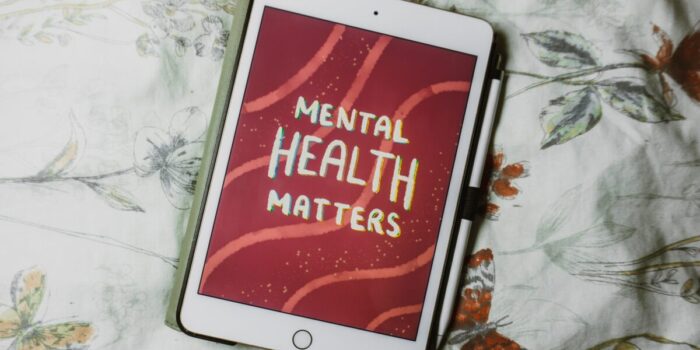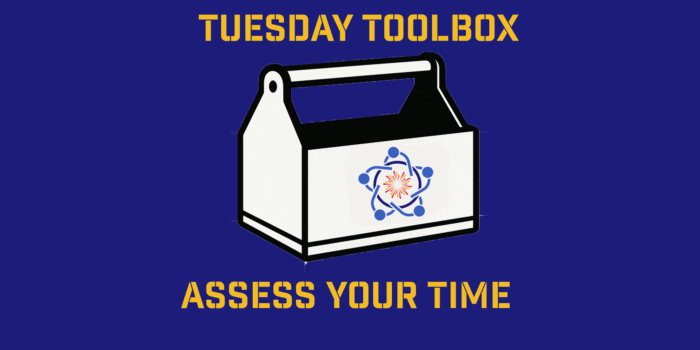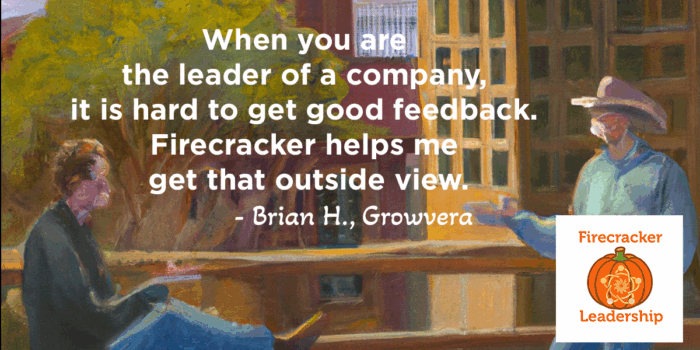What hasn’t happened this year that needs to? Would getting clarity help?

Wow! All three of these can be slippery slopes for some executives. Did any of these make you uncomfortable?
An outside-the-box approach to workplace wellness
By Leah Borski
Opinions expressed by Entrepreneur contributors are their own.
Hidden mental health hurdles put your business at risk. If you’re unaware there’s a problem, what you don’t know can hurt you. Alternatively, you (or your employees) might recognize symptoms and seek medical help, only to stumble in search of a diagnosis that’s unattainable.
Solving the puzzles of mental health can be tricky. Some pieces don’t fit neatly into the compartmentalized model of Western medicine. Humans are generally hardwired to organize complex ideas into standardized boxes. It gives us a sense of control, security and order. This perpetuates the belief that mental health issues are limited to the diagnosable … a mistake that can cost you productivity, profit and a whole lot more.
Mental health is not merely absence of mental illness
This awareness can help us make changes that boost productivity and profit, for sure. But more importantly, these changes increase enjoyment of our lives.
The following three issues are hidden from the mental health scope because they’re currently not diagnosable. This means they aren’t recognized by the DSM-5 (The Diagnostic and Statistical Manual of Mental Disorders, Fifth Edition).
One major problem this causes for companies and employees is that mental health services often require a DSM-5 recognized diagnosis in order to receive insurance payment.
Thankfully, no diagnosis is necessary to support mental health habits and instigate change.
1. Social media addiction
One reason this might not yet be diagnosable is that the most recent version of the DSM-5 was published in 2013. Much has changed in both the online space and our understanding of human behavior since then.
According to behavioral addiction specialist Hailey Shafir, LCMHCS, LPCS, LCAS, CCS, “Research on behavioral addictions has found evidence for internet, gaming, and social media addictions. What we know is that these activities all trigger the release of dopamine, a powerful brain chemical that causes the ‘high’ most people feel when they take an addictive drug. Over time, repeated use can create ‘addiction pathways’ in the brain, making it much more difficult for a person to control, cut back, or stop their use.”
In other words, social media and addictive substances trigger our brains’ reward systems in the same way.
Shafir adds, “These platforms are actually designed to be addictive in nature. Recent research has proven that getting ‘likes’ and comments on social media causes the release of dopamine, which is further proof of its addictive pull.”
Many people’s social media behavior could fit into the “addiction” category (compulsive or obsessive use). However, the word addiction is fraught with negative connotations. It can put people on the defensive, pushing them to justify or hide their actions.
The average employee spends 12% of their working hours using unproductive social media applications, as per the job search website Zippia. More than half of companies surveyed have a social media policy in place, yet 30% of their workers admit to using social media on the job in an effort to get a break from a stressful workday. (In comparison, 40% of employees who work at organizations without these types of policies use social media during the workday.)
I’m no math or finance expert, but it’s easy to get a general idea of lost productivity and profit resulting from these statistics. Consider an employee working 40 hours per week and earning $30 per hour. Twelve percent of their working hours equates to 4.8 unproductive hours per week. This one employee’s non-work related social media use costs you almost $7,500 per year in lost productivity hours (not to mention resultant revenue loss).
2. Gray-area drinking
At least two of 11 criteria listed in the DSM-5 must be met for a diagnosis of “alcohol use disorder.” One of these criteria is Drinking that often interferes with taking care of your home or family, or causes job troubles or school problems.
There were many points in my own 30-year alcohol use journey where only this one applied. Even though I was “undiagnosable,” my work suffered. I never lost a job or clients over it. I was present and never drank before or during work. It was the mental fog and exhaustion caused by drinking the night before that muddled my performance.
Looking back on those times in my life through a better-informed lens, this isn’t too surprising. Alcohol use disrupts our sleep patterns, causing feelings of anger, sadness, mental exhaustion and stress. Alcohol also increases levels of the stress hormone cortisol. These adverse effects happen even with occasional use. In addition, excessive alcohol use can worsen or trigger other mental health struggles, including depression and anxiety.
It’s difficult to quantify the exact profit loss caused by alcohol use, but it is a known problem. Addiction costs companies $442 billion a year in health care costs, lost productivity and absenteeism, according to nonprofit advocacy organization Shatterproof. That figure, however, doesn’t specifically include losses fueled by undiagnosed alcohol users.
This particular mental health hurdle is a paradox. It’s hidden by incessant normalization of alcohol use alongside a stigmatization of users. Alcohol is revered as a tonic for soothing frustrations and celebrating life events. We joke about secretly sipping wine from our coffee cups to survive Zoom fatigue. Yet stigma continues, rooted in the false belief that there are only two camps: diagnosable “alcoholics” in one and “normal drinkers” in the other.
What’s seldom understood is that the line between these is wide and blurred.
3. Burnout
Instead of jumping into the popular blame-game conversation, let’s get one thing clear. Burnout can stem from a variety of circumstances, including work environment, neurotype and the two previous issues listed above. Perhaps the most recognized and relatable, though, is work burnout. A report from Mental Health America, “Mind the Workplace,” states that “Most employees are experiencing the early signs of burnout” with nearly 83 percent of respondents agreeing with the statement, “I feel emotionally drained from my work.”
Whether burnout is a result of work or rooted elsewhere, two facts remain.
First, you and your people are your greatest assets in business. Burned-out leadership and/or employees wields direct blows to both productivity and profit.
Second, it’s another undiagnosable mental health hurdle. Harvard Business Review asserts that the psychological and physical problems of burned-out employees cost an estimated $125 billion to $190 billion a year in healthcare spending in the U.S. alone.
Diagnosability is a big part of the equation. People can’t get effective medical treatment for a problem that’s impossible to diagnose. Burnout shares many symptoms with depression but doesn’t check all the boxes required for that diagnosis. You or your employees might bounce from one provider to another, scrambling for answers. The downsides to this include maxed-out company health benefits, loss of productivity while at work and more missed work due to medical appointments and/or unresolved symptoms.
Cultivate mental wellbeing at work
What if we could avoid these threats to productivity and profit by addressing the behaviors before they spiral into debilitating illness? It is possible through communication, collaboration and compassion for self and others.
Develop a company culture that supports stress relief and overall mental wellness. You might provide workday breaks for group meditation or yoga sessions facilitated by local or online providers. Meetings or team-building events could include activities that support mental health (physical activity, being outdoors, aromatherapy, volunteering). Even five-minute faux nap breaks can instigate dramatic upshifts to work energy.
These counterintuitive activities are proven to enhance mental agility, focus, innovation and happiness — the cornerstones of productivity at work.
Rigidly defined diagnoses are not requisites for change
Resolving any mental health matter, diagnosable or not, requires a multifaceted approach.
The most important thing is to not use workplace wellbeing techniques as a bandaid to cover up deeper issues. Rather, focus on emotionally intelligent leadership. When leaders and employees openly discuss mental health hurdles without judgment — and receive support to manage them — productivity, profit and people all thrive.



